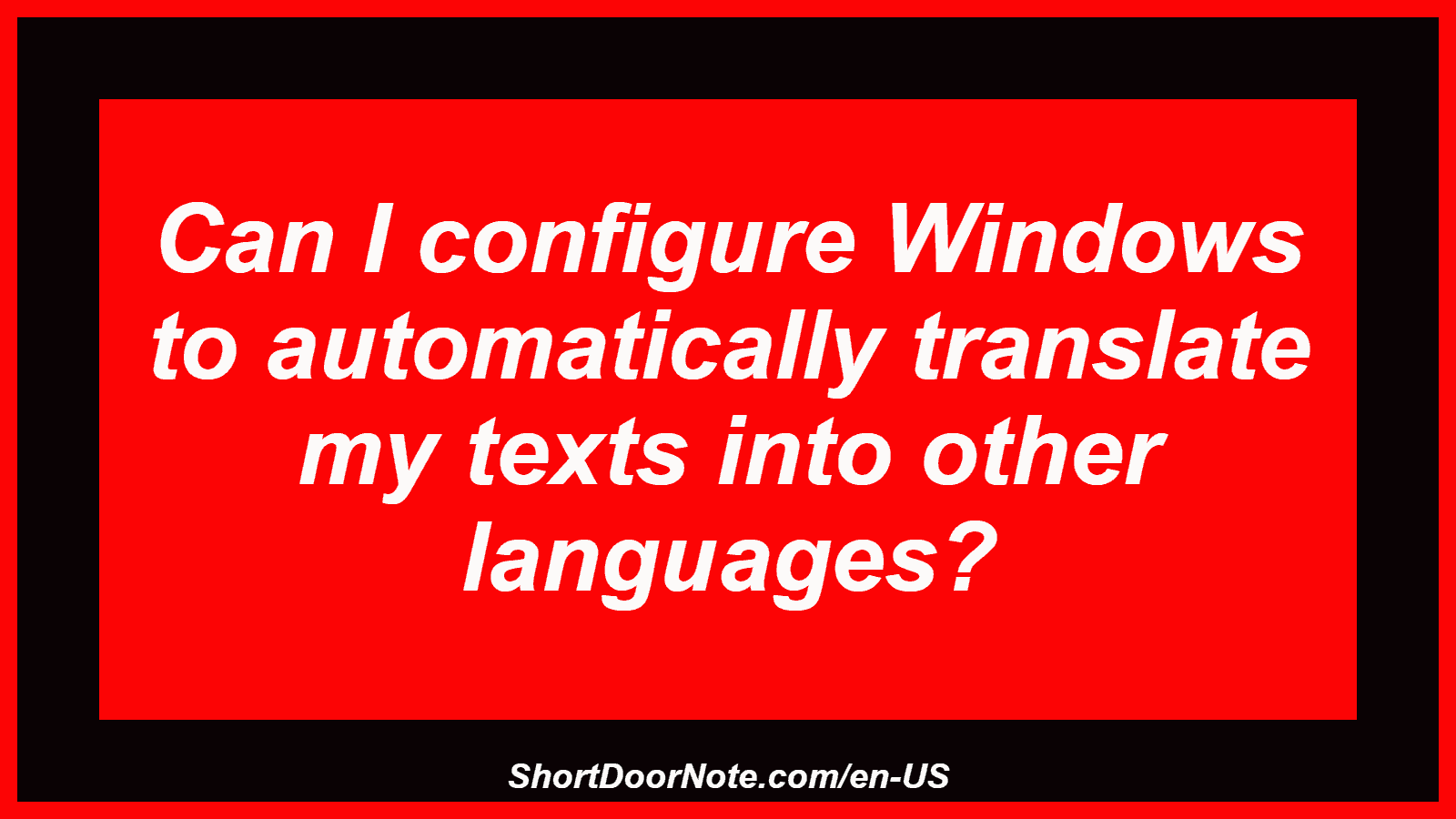Can I configure Windows to automatically translate my texts into other languages?
Question about automatic translation of texts in Windows, indicating the possibility of overcoming language barriers.
The prompt "Can I configure Windows to automatically translate my text into other languages?" raises an interesting question related to advancing technology and global connectivity. It indicates a user's interest or need to overcome language barriers and communicate with others in different languages.
The idea of automatically translating texts into other languages is not new. In today's digital world, there are a variety of tools and applications that allow you to do just that. Windows itself offers some built-in features and supports third-party apps or programs that can perform automatic translations.
Such a feature can be particularly useful for people who work with international contacts professionally or privately, or who simply want to facilitate multilingual communication. It could be beneficial for business people, students, travelers, or simply for everyday use.
Automatic translation technologies often use complex algorithms and artificial intelligence to translate text from a source language to a target language. They rely on large amounts of data and training data that help understand context and meaning, resulting in increasingly accurate translations.
However, there are also limitations and challenges with automatic translation. Some nuances, cultural subtleties or wordplay can be lost or misinterpreted. Therefore, it is important to critically review automatically translated texts and correct them if necessary to avoid misunderstandings.
Windows users have several options for configuring and using such translation tools. For example, you can install browser extensions that enable automatic translations on websites or download special applications that are integrated into Windows and provide a seamless translation experience.
The question on the sign could also point to technical support or instructions available to Windows users to enable or customize such features. It could address the diversity of needs and requirements of users in different linguistic and cultural contexts and highlight ways in which Windows contributes to being a global communications platform.
Overall, the explanatory sign demonstrates a user's desire and curiosity to use modern technologies to overcome language barriers and enable effective communication in an increasingly globalized world. It also highlights the role of Windows and similar platforms in providing tools and resources that promote linguistic diversity and facilitate access to information and interactions across borders.
Humorous Warning Sign Explanation
[1004487]





